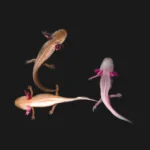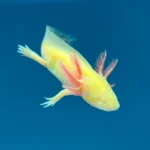Axolotl Aquarium Setup

Axolotl Aquarium Setup: Your Ultimate Guide
Setting up an aquarium for axolotls can be a rewarding experience, but it requires careful planning to ensure your new aquatic friends thrive. In this guide, we’ll walk you through everything you need to know for an optimal axolotl aquarium setup. From tank size to water conditions, let’s dive in!
Understanding Axolotls
Axolotls, often called “Mexican walking fish,” are unique amphibians known for their regenerative abilities and friendly nature. They thrive in clean, cool water and require specific conditions to stay healthy. Before you begin your setup, understanding their needs is crucial.
Choosing the Right Aquarium Size
The first step in your axolotl aquarium setup is selecting an appropriate tank size. A minimum of 20 gallons is recommended for one axolotl. If you plan to house multiple axolotls, increase the tank size by at least 10 gallons for each additional axolotl. This ensures they have enough space to swim and establish their territory.
Recommended Tank Sizes:
- 20 Gallons: Ideal for one axolotl.
- 30 Gallons: Suitable for two axolotls.
- 40 Gallons: Perfect for three axolotls.
Essential Equipment
1. Filtration System
A reliable filtration system is vital to maintaining water quality. Axolotls produce a lot of waste, so a filter that can handle multiple gallons per hour is necessary. Look for a filter that provides biological, mechanical, and chemical filtration.
2. Heater or Chiller
Axolotls thrive in cooler temperatures between 60°F and 68°F (16°C to 20°C). If you live in a warmer climate, consider investing in a chiller to keep the water temperature stable. Avoid heaters, as they can raise water temperatures too high. What Do Axolotls Eat
3. Substrate
Choosing the right substrate is critical. Fine sand is the best option, as larger substrates can cause impaction if ingested. Avoid gravel or sharp materials that could injure your axolotls.
4. Decor and Hiding Spots
Axolotls appreciate hiding spots to feel secure. Use caves, plants, and decorations that are smooth and free of sharp edges. Live or silk plants can also enhance the tank’s aesthetics while providing hiding places.
Water Quality and Parameters
Maintaining excellent water quality is essential for your axolotl’s health. Here are key parameters to monitor:
- pH Level: Aim for a pH between 6.5 and 7.5.
- Ammonia/Nitrite Levels: Both should be 0 ppm.
- Nitrate Levels: Keep below 20 ppm.
- Temperature: Maintain between 60°F and 68°F.
Regular water changes (about 20% weekly) are necessary to keep your axolotl’s environment clean and healthy.
Cycling the Aquarium
Before introducing your axolotl, you need to cycle the aquarium to establish beneficial bacteria that break down harmful waste products. This process can take 4-6 weeks. You can cycle your tank by:
- Fishless Cycling: Add ammonia to simulate fish waste.
- Using Live Bacteria: Add bacteria supplements to expedite the process.
Test water parameters regularly during this period to ensure everything stabilizes.
Introducing Your Axolotl
Once your tank is cycled and water parameters are stable, it’s time to introduce your axolotl. Here’s how to do it safely:
- Acclimate: Float the sealed bag containing your axolotl in the tank for about 15-20 minutes. Gradually mix tank water into the bag to help them adjust to the new environment.
- Release: Gently place the axolotl in the tank. Avoid dropping them from a height, as they can be injured axolotl for sale .
Feeding Your Axolotl
Axolotls are carnivores and enjoy a diet of high-quality pellets, worms, and live foods like brine shrimp and bloodworms. Feed them several small meals every week rather than one large meal to prevent overeating.
Regular Maintenance
Maintaining your axolotl aquarium is essential for their health. Here are some tips:
- Weekly Water Changes: Change 20% of the water every week.
- Test Water Parameters: Regularly check pH, ammonia, nitrite, and nitrate levels.
- Clean the Tank: Use a gravel vacuum to remove waste from the substrate during water changes.
Conclusion
Setting up an axolotl aquarium requires attention to detail and a commitment to maintaining water quality. By following these guidelines, you can create a thriving environment for your axolotl. Remember, a happy axolotl makes for a vibrant aquarium experience!
With the right setup, your axolotl will not only survive but also flourish, bringing joy and fascination to your home. Happy fishkeeping!












